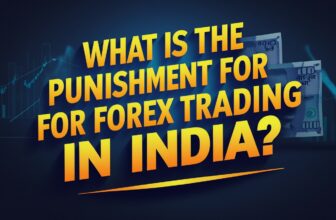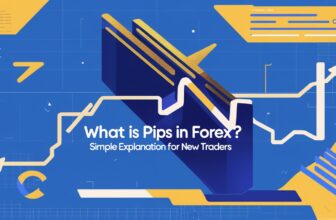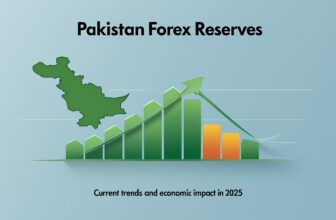
Exotic currency pairs offer an exciting opportunity for traders who seek to diversify their portfolios beyond the major currencies. Such pairs are usually based on currencies from smaller or emerging economies and have more volatility and wider spreads. The knowledge of how to operate in such markets may be a great advantage to traders while also handling risks involved.
Trading exotic pairs requires a solid strategy and knowledge of both the forex market structure and the economic factors impacting these currencies. As I explore the dynamics of exotic currency pairs, I will discuss essential trading strategies and highlight key considerations for success in this niche market.
By the end of this article, you will gain insights into the potential advantages and challenges of trading exotic currencies, enabling you to make informed decisions and enhance your trading approach.
Key Takeaways
- Exotic currency pairs can offer unique trading opportunities in emerging markets.
- Understanding economic factors is crucial for successful trades in the forex market.
- A solid trading strategy helps manage the risks associated with volatility in exotic currencies.
Understanding Exotic Currency Pairs
Exotic currency pairs consist of currencies from emerging or smaller economies, paired with a major currency like the US dollar. These pairs can offer unique trading opportunities, but they also come with specific risks. It’s essential to understand their characteristics and how they compare to major and minor currency pairs.
Characteristics of Exotic Currencies
Exotic currencies are typically those from developing countries, such as the South African rand or the Turkish lira. They tend to have lower trading volumes, leading to less liquidity compared to major currencies like the euro or the yen.
The lower liquidity often results in wider spreads, meaning the difference between the buying and selling price is larger. This can increase trading costs. Additionally, exotic pairs can exhibit high volatility. Price movements are often influenced by economic events specific to the country or region.
Trading exotic pairs may also involve higher risks due to political instability or changes in local economies. Understanding these characteristics is crucial before engaging in trading exotic currencies.
Comparing Majors, Minors, and Exotics
In the world of currency trading, pairs are generally categorized into three types: major, minor, and exotic. Major currency pairs, like EUR/USD or GBP/USD, involve the most traded currencies. They usually offer high liquidity and tighter spreads.
Minor currency pairs, such as AUD/NZD, consist of currencies that are not as widely traded. They have decent liquidity but may carry slightly wider spreads than major pairs. In contrast, exotic currency pairs are less traded, leading to lesser liquidity and wider spreads.
For example, a trader may find the USD/TRY (Turkish lira) pair less predictable than the USD/JPY (Japanese yen) pair because of these factors. It’s essential to choose wisely based on trading goals and risk appetite when exploring these currency pairs.
3 Best Exotic Currency Pairs for Profitable Trading Opportunities
In the world of major forex trading, most traders focus on well-known pairs like EUR/USD, GBP/USD, or USD/JPY. However, popular exotic pairs — which combine a base currency from a developed economy with a quote currency from a developing or emerging market — offer unique opportunities for those willing to navigate higher volatility and risk.

These pairs can be less liquid and more sensitive to geopolitical and economic shifts, making them ideal for strategies like position trading. Below, we explore three of the best exotic currency pairs to boost your trading opportunities and diversify your portfolio.
1. USD/TRY (US Dollar / Turkish Lira)
Overview:
- Base Currency: USD (US Dollar)
- Quote Currency: TRY (Turkish Lira)
The USD/TRY pair is one of the most traded exotic pairs, combining the stability of the US Dollar with the volatility of the Turkish Lira. The first currency (USD) is a safe-haven asset, while the Turkish Lira represents an emerging market currency influenced by domestic economic and political factors.
Why It’s Profitable:
- Volatility: The Turkish Lira is highly sensitive to inflation rates, political instability, and monetary policy decisions from the Central Bank of Turkey. These factors create significant price fluctuations, ideal for short-term and position trading strategies.
- Carry Trade Opportunities: Due to high interest rates in Turkey, traders can take advantage of the interest rate differential by holding long positions in USD/TRY.
Trading Considerations:
- Economic Events: Watch for Turkey’s inflation reports, political events, and interest rate decisions, as these can trigger sharp movements.
- Risk Management: Due to the high volatility, employing stop-loss orders and careful leverage management is essential.
2. EUR/SEK (Euro / Swedish Krona)
Overview:
- Base Currency: EUR (Euro)
- Quote Currency: SEK (Swedish Krona)
The EUR/SEK pair offers an attractive mix of stability and volatility. The Euro, as the base currency, is backed by the Eurozone’s robust economy, while the Swedish Krona, as the quote currency, reflects Sweden’s export-driven economy.
Why It’s Profitable:
- Moderate Volatility: Unlike some exotic pairs, EUR/SEK provides a balanced level of volatility, making it suitable for traders who want exposure to exotic markets without extreme risks.
- Export Dependency: Sweden’s economy relies heavily on exports, particularly in industries like automotive, machinery, and technology. Shifts in global trade dynamics can create profitable trading opportunities.
- ECB and Riksbank Policies: The policies of the European Central Bank (ECB) and Sweden’s Riksbank directly impact this pair, offering strategic entry points for traders using position trading techniques.
Trading Considerations:
- Economic Reports: Keep an eye on ECB announcements, Swedish GDP reports, and industrial production data.
- Liquidity: While more liquid than many exotic pairs, sudden changes in sentiment can lead to swift price moves.
3. USD/ZAR (US Dollar / South African Rand
Overview:
- Base Currency: USD (US Dollar)
- Quote Currency: ZAR (South African Rand)
The USD/ZAR pair combines the stability of the US Dollar with the volatility of the South African Rand. The Rand’s value is heavily influenced by South Africa’s political stability and commodity prices, particularly gold and platinum.
Why It’s Profitable:
- Commodity Correlation: South Africa is a major exporter of precious metals. As a result, the Rand’s value often fluctuates with gold and platinum prices. This correlation creates opportunities for traders who follow commodity markets.
- High Volatility: The Rand’s sensitivity to global risk sentiment, economic reforms, and political events makes this pair suitable for traders looking for significant price swings.
- Emerging Market Trends: As South Africa’s economy grows or faces challenges, the USD/ZAR pair provides numerous entry points for position trading and short-term strategies.
Trading Considerations:
- Economic Indicators: Pay attention to South Africa’s GDP reports, mining production data, and inflation rates.
- Geopolitical Factors: Political events, labor strikes, and global risk sentiment can lead to rapid movements in the Rand’s value.
Exploring popular exotic pairs like USD/TRY, EUR/SEK, and USD/ZAR opens the door to high-volatility trading opportunities beyond the conventional major forex pairs. These pairs allow traders to benefit from the dynamics of emerging markets, leveraging factors such as inflation rates, commodity prices, and monetary policies.
Understanding the roles of the base currency and quote currency, combined with strategic approaches like position trading, can help you capitalize on the unique opportunities presented by exotic currency pairs.
Trading Dynamics of Exotic Pairs
Trading exotic currency pairs comes with unique challenges and opportunities. Understanding their dynamics is essential for effective trading strategies. I will explore how market volatility impacts these pairs and the role of spreads in determining costs.
Influence of Market Volatility
Exotic currency pairs, often tied to emerging markets, can experience significant volatility. Factors such as political events, economic data releases, and interest rate changes can cause sharp price movements. For instance, a change in a country’s central bank policy might lead to rapid appreciation or depreciation of its currency.
The volatility can create both risk and opportunity. Wider price swings may result in greater rewards, but they also increase potential losses. I find that keeping an eye on key economic indicators and news events helps manage this risk. Understanding volatility is vital for executing trades effectively and optimizing profit potential.
Role of Spread in Trading Exotics
The bid-ask spread is a critical component in trading exotic currency pairs. Unlike major currency pairs, exotic pairs generally have wider spreads due to lower trading volumes and liquidity. This means the difference between the buying and selling price is greater, which can affect profitability.
I watch the spread closely to ensure it aligns with my trading strategy. For example, if I plan for a short-term trade, a wider spread can eat into my profits, making it less appealing. On the other hand, understanding spreads allows me to make informed decisions about which exotic pairs to trade. Monitoring the spread helps in assessing transaction costs and improving overall trade execution.
Forex Market Structure
In the Forex market, understanding the structure helps traders navigate the complexities of currency trading. The market consists of various key players and operates with varying levels of liquidity and trading volumes. Each of these elements plays a vital role in how trades are executed and how currency prices move.

Key Players in the Forex Market
The Forex market includes several important players. Central banks are among the most influential, as they control monetary policy and can impact currency values through interest rates and foreign exchange reserves.
Banks and financial institutions also play a significant role. They facilitate trades and provide liquidity. Large corporations use forex to hedge against currency risks in their international operations. Retail traders participate in the Forex market as well, often trading through brokers.
An example of a central bank’s influence is the European Central Bank, which manages the euro and its exchange rate. Additionally, retail traders often use platforms like MetaTrader 4 to access the market and execute trades. Understanding these players helps identify trends and potential price movements in currency pairs.
Understanding Liquidity and Trading Volumes
Liquidity in the Forex market refers to the ease of buying and selling currencies without causing significant price changes. High liquidity generally leads to lower transaction costs and tighter spreads. Major currency pairs, such as EUR/USD and USD/JPY, usually have high trading volumes and liquidity due to their popularity.
On the other hand, exotic currency pairs, such as the South African rand paired with the US dollar, often have lower trading volumes. This can result in wider spreads and higher volatility, making them riskier.
Traders must carefully consider these factors. Monitoring liquidity levels can provide insights into potential trading opportunities. Understanding the impact of trading volumes can help in making informed decisions about when to enter or exit a position.
Trading Strategies for Exotic Pairs
When trading exotic currency pairs, understanding effective strategies is essential. These pairs can be more volatile than major pairs, requiring careful planning and analysis. I often use a mix of risk management techniques and both fundamental and technical analysis to navigate this market.
Risk Management Techniques
Risk management is vital when trading exotic pairs due to their high volatility. I use various tools to protect my investments. Stop-loss orders are one of my primary techniques. By setting a stop-loss, I can limit losses if the market moves against my position.
Another aspect I consider is position sizing. I make sure not to risk more than a small percentage of my trading account on any single trade. This approach helps me withstand potential losses without significant impact on my overall capital. Additionally, I monitor market conditions to adjust my strategies. Understanding when to increase or decrease my risk can be critical for long-term success.
Analytical Approaches: Fundamental and Technical Analysis
In my experience, using both fundamental and technical analysis gives me a well-rounded view of the market. For fundamental analysis, I focus on economic indicators such as interest rates, inflation, and the overall health of the economy linked to the exotic currency. These factors can greatly influence exchange rates.
On the technical side, I analyze chart patterns and trends. I often look for common indicators like moving averages or the Relative Strength Index (RSI) to spot entry and exit points. This combination of analysis methods allows me to make more informed trading decisions, helping me better predict price movements and enhance my trading efficiency.
Economic Factors Affecting Exotic Currencies

Exotic currencies are influenced by various economic factors. Two of the main influences are political instability and the overall economic environment, including growth and inflation. Understanding how these factors play a role in currency value is essential for anyone involved in trading exotic pairs.
Impact of Political Instability
Political instability can significantly affect the value of exotic currencies. Countries experiencing unrest often see their currencies decline in value. A drop in investor confidence leads to reduced investment and less market liquidity.
For instance, the Turkish lira has faced issues due to political turmoil and economic management. This may lead to high inflation rates and a decrease in the value of the currency.
Additionally, intense political situations can prompt central banks to intervene in forex markets. This often results in wider spreads for exotic pairs, making trading more costly. As a trader, I monitor political news closely to anticipate potential impacts on exotic currency values.
Economic Growth and Inflation
Economic growth and inflation are critical to exotic currency performance. Strong economic indicators generally boost a currency’s value. For example, if an emerging market posts high GDP growth, its currency may appreciate.
Inflation is another key factor. High inflation can erode purchasing power, leading to currency depreciation. Currencies from countries with stable inflation rates are often more attractive.
I watch inflation data and GDP reports closely because they can signal changes in market sentiment. A stable economic environment usually supports stronger currencies, making them more favorable for trading exotic pairs. Understanding these economic indicators helps traders make informed decisions in the forex market.
Pros and Cons of Exotic Forex Trading
Exotic currency pairs can offer unique opportunities for traders. However, they also come with significant risks. I will outline the potential rewards and challenges associated with trading these less common forex pairs.
Potential for High Returns
Exotic forex pairs can provide high profit potential. These pairs, often involving currencies from emerging or developing economies, can experience greater price fluctuations compared to major currencies. The volatility in the market can lead to significant gains if timed correctly. For example, pairs like the South African rand (ZAR) against the US dollar (USD) may see sharper movements during economic changes.
Traders who focus on exotic pairs may also benefit from lower competition. Since many traders stick to major and minor pairs, there might be unique opportunities to capitalize on price movements. This combination of volatility and lower participation can create chances for substantial profits. However, such high returns are usually accompanied by increased risk.
Challenges of Thin Markets
Trading exotic currency pairs presents several challenges due to their thinly traded nature. These pairs often have lower trading volumes, leading to less liquidity. As a result, I may encounter wider spreads that can eat into profits. Wide spreads make it more difficult to enter or exit trades at favorable prices.
Additionally, the illiquid nature of these markets means that large orders can significantly impact prices. This creates risks when trying to close a position. For instance, if I want to sell a large amount of an exotic pair, the lack of buyers can cause a price drop. Understanding the nuances of trading exotic currencies is essential for managing these challenges effectively.
Choosing the Right Broker for Exotic Pairs
Selecting a broker for trading exotic currency pairs is crucial for success. I focus on broker offerings and their fee structures. Understanding these factors helps in making informed decisions that can enhance trading outcomes.
Assessing Broker’s Exotic Currency Offerings
When evaluating a broker, I first look at the range of exotic currency pairs available. Exotic pairs include currencies from developing or emerging markets, such as the South African rand or the Turkish lira. Not all brokers offer the same exotic pairs, so it’s vital to find one that aligns with my trading strategy.
Liquidity is another key factor. Exotic pairs can be less liquid, leading to wider bid-ask spreads. This characteristic impacts trading costs. Hence, I prefer brokers that provide adequate liquidity to minimize my risks.
Additionally, I examine the trading platforms offered by the brokers. Platforms should allow easy access to charts and data for technical analysis. I also consider the availability of features like demo accounts, which are useful for practicing strategies without financial risk.
Understanding Brokerage Fees and Spreads
Brokerage fees and spreads are essential aspects to analyze when choosing a broker for exotic pairs. Exotic currency pairs often have higher spreads compared to major pairs. High spreads can eat into profits. Thus, I look for brokers with competitive spreads that won’t hinder my trading potential.
I also review the fee structure for different types of trading, such as day trading or longer-term strategies. Some brokers charge commissions per trade, while others may have a spread markup. Understanding these costs helps me calculate my potential earnings accurately.
Moreover, I’m aware of hidden fees, such as overnight financing charges, which can significantly affect trades held for multiple days. Always clarifying these fees upfront can prevent unpleasant surprises. By taking these elements into account, I make more informed choices about my trades and ultimately, my success in the forex market.
Regional Focus: Emerging Markets

Emerging markets present unique opportunities in the currency trading world. Understanding the currencies and market conditions can help traders make informed decisions.
Exploring Emerging Market Currencies
Emerging market currencies are often less liquid compared to major pairs. Examples include the South African rand (ZAR), Turkish lira (TRY), and the Philippine peso (PHP). These currencies can be highly volatile and influenced by global economic changes.
When trading exotic currency pairs, it is essential to consider local economic factors and political stability. A country with strong economic growth may see its currency appreciate. For instance, the Brazilian real (BRL) can fluctuate based on commodity prices and foreign investment flows.
Traders often find that the spreads on these currencies are wider due to lower trading volumes. This can affect profitability and requires careful monitoring of market conditions. Keeping an eye on interest rates set by central banks can also impact these currencies significantly.
Evaluating Market Conditions in Specific Regions
Each region’s market conditions greatly influence currency behaviors. In Latin America, for instance, inflation rates can affect the Peruvian sol (PEN) and its competitiveness. Government policies that stimulate growth can lead to currency appreciation.
In Eastern Europe, geopolitical tensions often sway currencies like the Hungarian forint (HUF) and Polish złoty (PLN). Traders should be aware of regional conflicts and their potential economic impacts.
Asia’s markets exhibit different characteristics. The Singapore dollar (SGD) may offer stability due to its robust economy while emerging currencies in Southeast Asia can be more exposed to external shocks. Understanding these nuances helps me navigate the complex dynamics of trading exotic currency pairs effectively.
















